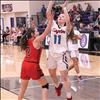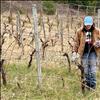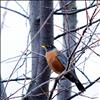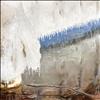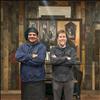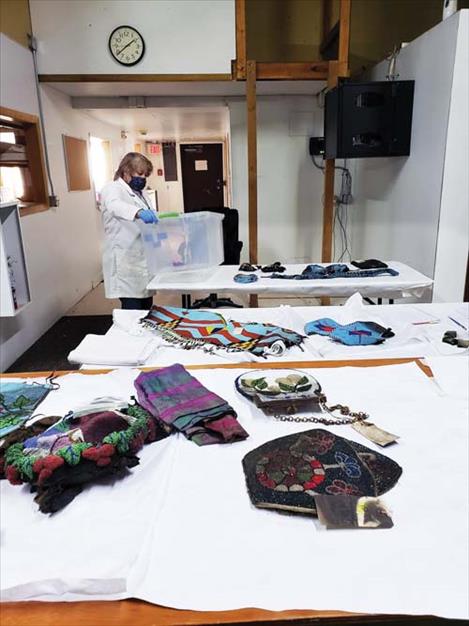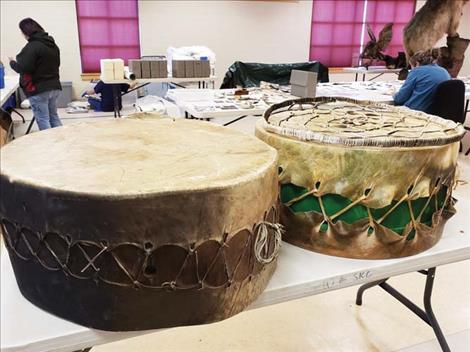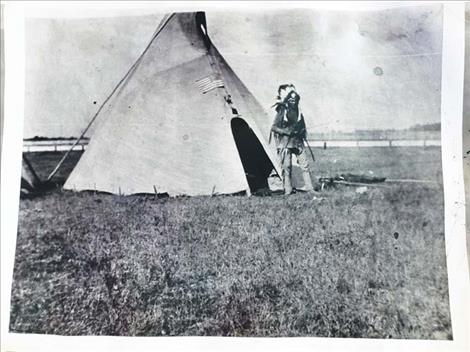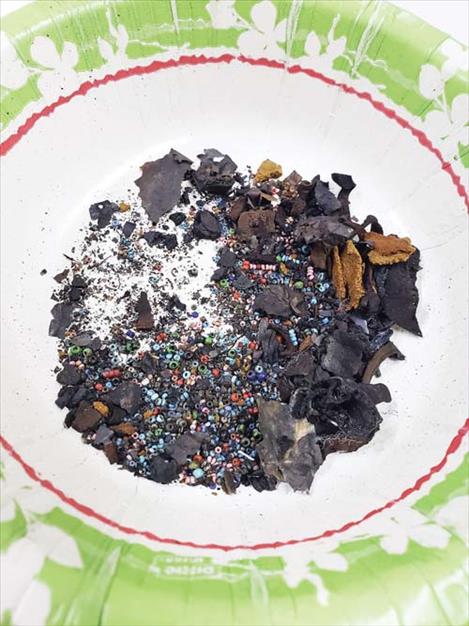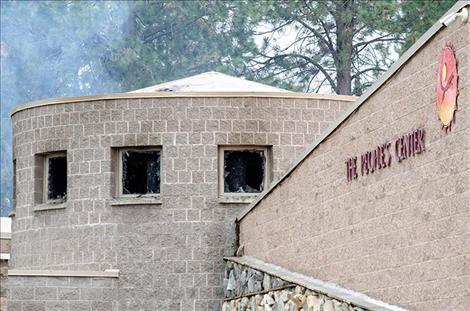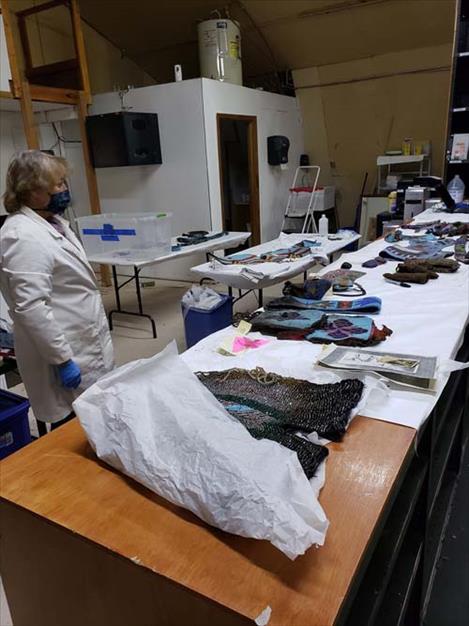People’s Center to reopen gift shop, cleanup underway
Hey savvy news reader! Thanks for choosing local.
You are now reading
1 of 3 free articles.
PABLO — After fire engulfed the The People’s Center on Sept. 6, museum officials wiped away tears and began the work of rebuilding to save precious artifacts of the Salish, Pend d’Oreille and Kootenai people.
“Our goal has been to pick up the pieces and move forward,” said The People’s Center Director Marie Torosian.
The fire was set by an arsonist identified as 33-year-old Julian Michael Draper who died in the building after barricading the doors. Lake County Sheriff Don Bell reported that the man’s body was recovered from the building.
Torosian said the inside of the building was deemed “totally demolished” by insurance appraisers after flames burned through the walls and wooden rafters, but the outside of the stone building can be saved.
“I give credit to the architects who designed the building,” she said. “It was put together very well.”
The plan is to eventually rebuild the People’s Center in the same building after many hours of clean up and rebuilding are done, although there isn’t a set timeline for the project at this time. “With the cleanup alone, we have a lot of work ahead of us,” she said.
Until the project is finished, center officials decided that a temporary home is needed for people to share the rich culture of the Flathead Indian Reservation. “We’ve had so many people asking when it’s going to open again, so we decided to move forward and open the gift shop in another location.”
“We will also have a gallery. It won’t be called a museum, yet, but we will have information on the tribe, the history of the fire and the process we are now working on to re-establish the center. We will also have education programming.”
Gift shop manager Loushie Charlo reported that she placed a huge order for the gift shop. “Beads are coming, although we won’t have a huge selection like we once had, that will come with time, but we will have beads, needles, threads, blankets, apparel and more.”
Education coordinator Aggie Incashola is working on cultural education activities and lessons, involving pictographs, petroglyphs and history. She is also planning to add Salish and Kootenai language lessons to the programs that will be available.
The officials searched across the reservation to find a new location for the gift shop and settled on a building in St. Ignatius with a secure basement where artifacts could be stored, although the location isn’t yet certain, but the products for the gift shop are ready.
“We are excited to be able to open soon, but we are waiting for approval of the lease. I think we will be open by Thanksgiving and will keep people posted when we are ready,” she said. “We will let everyone know as soon as it’s official.”
The People’s Center was home to a collection of artifacts, including photos, beadwork and historical documents. During the night of the fire, Torosian watched in disbelief as smoke and flames billowed from the center. Lights from the emergency response vehicles flashed in the dark. “My heart was breaking as flames blew up through the roof,” she said. “I thought we lost everything.”
The next morning, a small stream of smoke still filtered from the roof. A few firefighters stayed to keep watch. If you leaned in and looked into the front door from a distance, behind the yellow barricade tape, the inside looked like the walls had been painted black.
“That morning we went in with the insurance inspectors and walked around,” she said. “As soon as I walked in, I saw the buckskin beaded dresses intact. I felt a huge relief to see them. It made us cry tears of joy that they were still with us.”
The group walked around the museum and noticed that many of the items were drenched with water but seemed whole behind protective display cases, although not everything was intact. “Once we airdried them, many of the items fell apart. There was no way to salvage some of the vests. We were able to remove the back and save the beadwork. With a couple of the buckskin dresses, we couldn’t save them, but we will hold on to them to help tell our story.”
The items stored in the repository were completely lost. “They were burned to the point of not being salvaged,” she said. “There were beaded buckskin vests, bags, moccasins, buckskins dresses, lots of items.”
Dozens of volunteers showed up to the People’s Center after the fire to help. The volunteers put on their COVID-19 protective masks and gloves, had their temperatures checked and learned how to carefully handle the artifacts.
“We had volunteers putting things out on tables to dry while others photographed and assigned each item with a number,” she said. “We spent days removing items and did recover quite a few artifacts.”
The items were moved to the Salish Kootenai College, not far from the center, to be laid out on tables and assessed. Professional conservator Nancy Fonicello was hired to guide the recovery efforts. She specializes in the preservation of indigenous cultural materials. Help also arrived from the Museums Association of Montana; the Historical Museum at Fort Missoula; and the Hockaday Museum of Art in Kalispell. The United States Federal Emergency Management Agency provided a grant to help purchase archival supplies. “We had so much amazing help,” she said. “I am so grateful to everyone.”
After the items were dried and assessed, they were put into archival storage containers and taken to the Ninepipes Museum of Early Montana where they were stored in a secure location until they are ready to be cleaned. “Right now, the items are in storage, and once the insurance company says we can move forward, we will then begin the cleaning process,” she said.
The cleaning process involves intricate work that will take time. “There is a special way of cleaning off the suit from the artifacts,” she said. “You can’t use just anything. You have to be careful not to loosen and break the threads on the beadwork while the cleaning is being done. It takes special solutions and tools and a lot of time. The items will never be 100 percent, but we can repair them so that they can be displayed again.”
“We were able to do some cleaning on items during the assessment to see if it was even possible,” she said. “I was relieved, again, after the conservator worked for a couple weeks and decided that it was possible. We will be able to clean some of the items and restore them. I’m just so thankful to everyone for working on this as we keep moving forward.”










